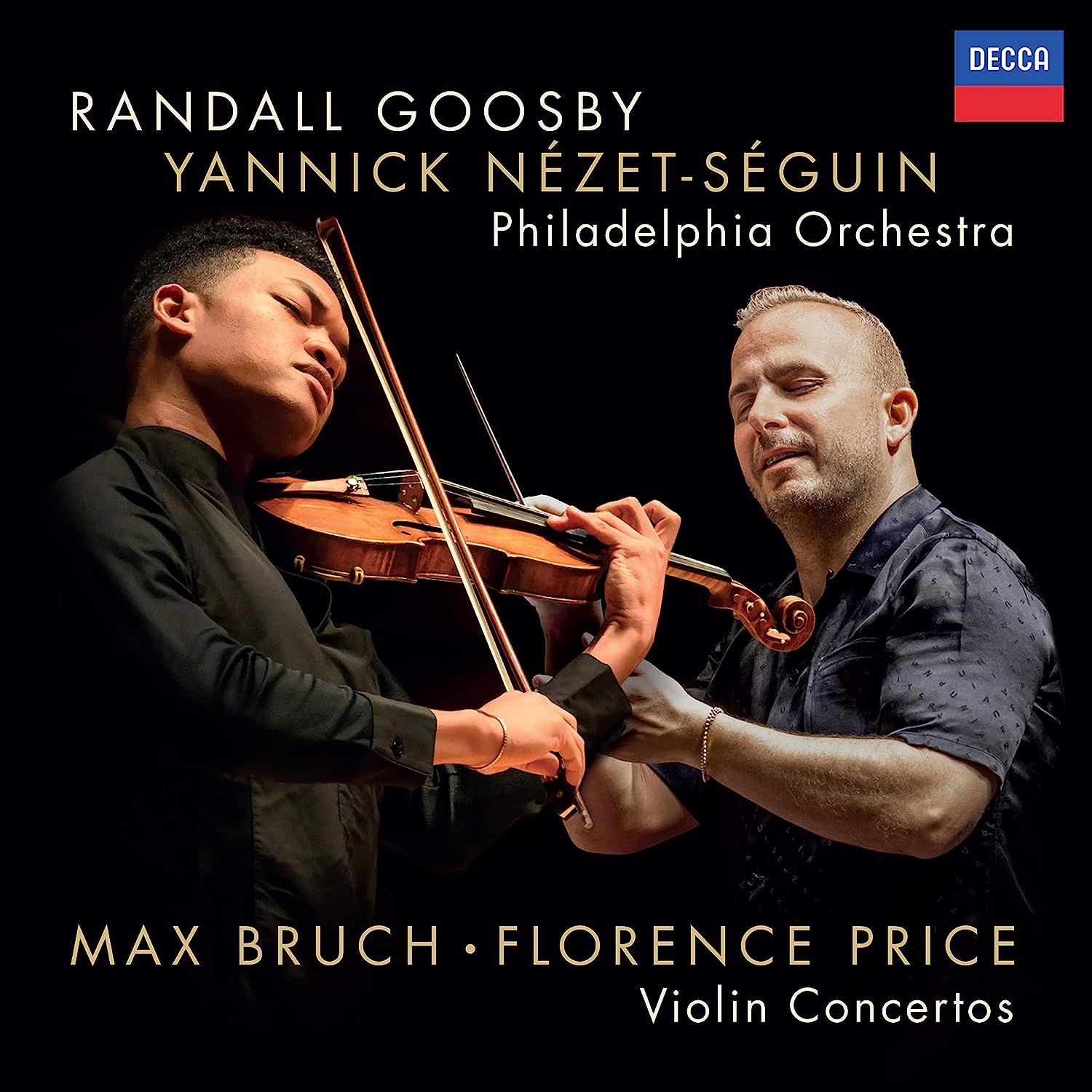 Bruch: Violin Concerto No. 1, Florence Price: Violin Concertos 1 and 2, Adoration Randall Goosby (violin), Philadelphia Orchestra/Yannick Nézet-Séguin (Decca)
Bruch: Violin Concerto No. 1, Florence Price: Violin Concertos 1 and 2, Adoration Randall Goosby (violin), Philadelphia Orchestra/Yannick Nézet-Séguin (Decca)
There’s much to enjoy here, but how frustrating that this disc’s sleeve notes reveal next to nothing about the main reason for listening to it. Thank goodness for Wikipedia, which tells us that Florence Price’s two violin concertos date from 1939 and 1952 and were rediscovered in 2009 as part of a stash of papers and manuscripts found in her abandoned Illinois summerhouse. In Alex Ross’s words, “a large quantity of Price’s music came perilously close to obliteration”, pointing out that her abandoned home was “a potent symbol of how a country can forget its cultural history.” Was she a major talent? I’m new to her music, so unqualified to comment as yet. That said, Concerto No. 1 is discursive but irresistibly melodic, a three-movement work which sounds in places like a mixture of Dvořák and Gershwin. The bluesy trumpet solo at the beginning of the slow movement is a case in point, preparing us for the soloist’s entry. Violinist Randall Goosby’s charisma makes the music sing, and he’s given lush support from Yannick Nézet-Séguin’s Philadelphians. There’s a lovely moment seconds before the close of the finale, Goosby suddenly dangling in space over a fruity chord, judged to perfection here.
Concerto No. 2 is in a single 15-minute movement, and you wish it was longer; Price’s orchestration is more distinctive (I wish she’d made more of those startling celesta flourishes in the opening tutti) and it’s structurally tidier. Goosby is terrific, and similarly magnetic in a lovely transcription of Price’s little Adoration, a late organ piece arranged here for violin and strings by Jim Gray. Plus, Bruch’s G minor Violin Concerto, one of those warhorses which is both a decent work and incredibly popular. Goosby’s exuberance is matched by Nézet-Séguin; this performance really moves. Decca’s engineering, the three concertos recorded during live performances last October, is excellent.
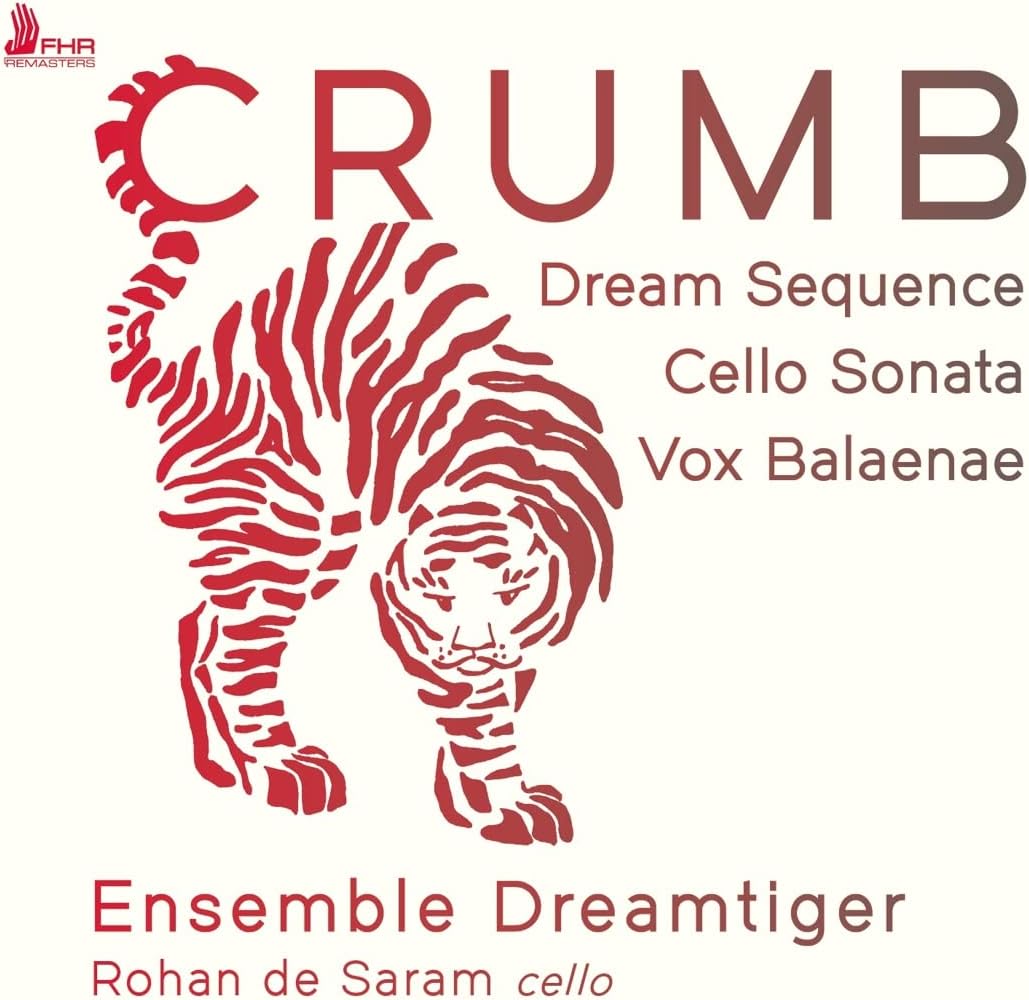 George Crumb: Dream Sequence, Cello Sonata, Vox Balaenae Ensemble Dreamtiger, with Rohan de Saram (cello) (FHR Remasters)
George Crumb: Dream Sequence, Cello Sonata, Vox Balaenae Ensemble Dreamtiger, with Rohan de Saram (cello) (FHR Remasters)
Shortly after George Crumb’s death in early 2022 the tape of a concert of his music in the Netherlands in 1978 was discovered, and has now been re-released having been re-mastered by the brilliant audio engineer John Croft. It features one of Crumb’s hits of the 70s, Vox Balaenae (“The Voice of the Whale”) alongside Dream Sequence and the Cello Sonata, the latter two both new to me. Crumb was part of the avant-garde movement in the 1960s and 1970s that rejected Romanticism, instead casting his ears into the wider worlds of Japanese, Indian and native Australian music. There is also, in Dream Sequence, a nod to electronics, although the spooky drone is provided by glass harmonica, rather than a machine. There is a gently nightmarish quality to the improvisational, always quiet, gestures from the violin, cello and piano, which float in and out of focus. I would love to hear it live, but through headphones the recording gives something of the delicacy and fragility of the sound.
Vox Balaenae, for flute, cello and piano, was a product of the unlikely hit record of 1970 Songs of the Humpback Whale, the first time that whale-song had been properly heard by humans. Crumb works through a series of variations, each depicting a geological era. There are innovations like requiring the flautist to sing through the instrument, the cellist to whistle and the pianist to play within the body of the instrument. But the music’s impact goes beyond gimmickry: it is Crumb’s sculpting of the sound and placing of sound events that gives it a rhetorical weight. And when the music finally opens out into a full-blooded melody in the final “Sea-Nocturne” there is a yearning quality I find irresistible. This record, a time-capsule from the 1970s, still speaks to us today. Bernard Hughes
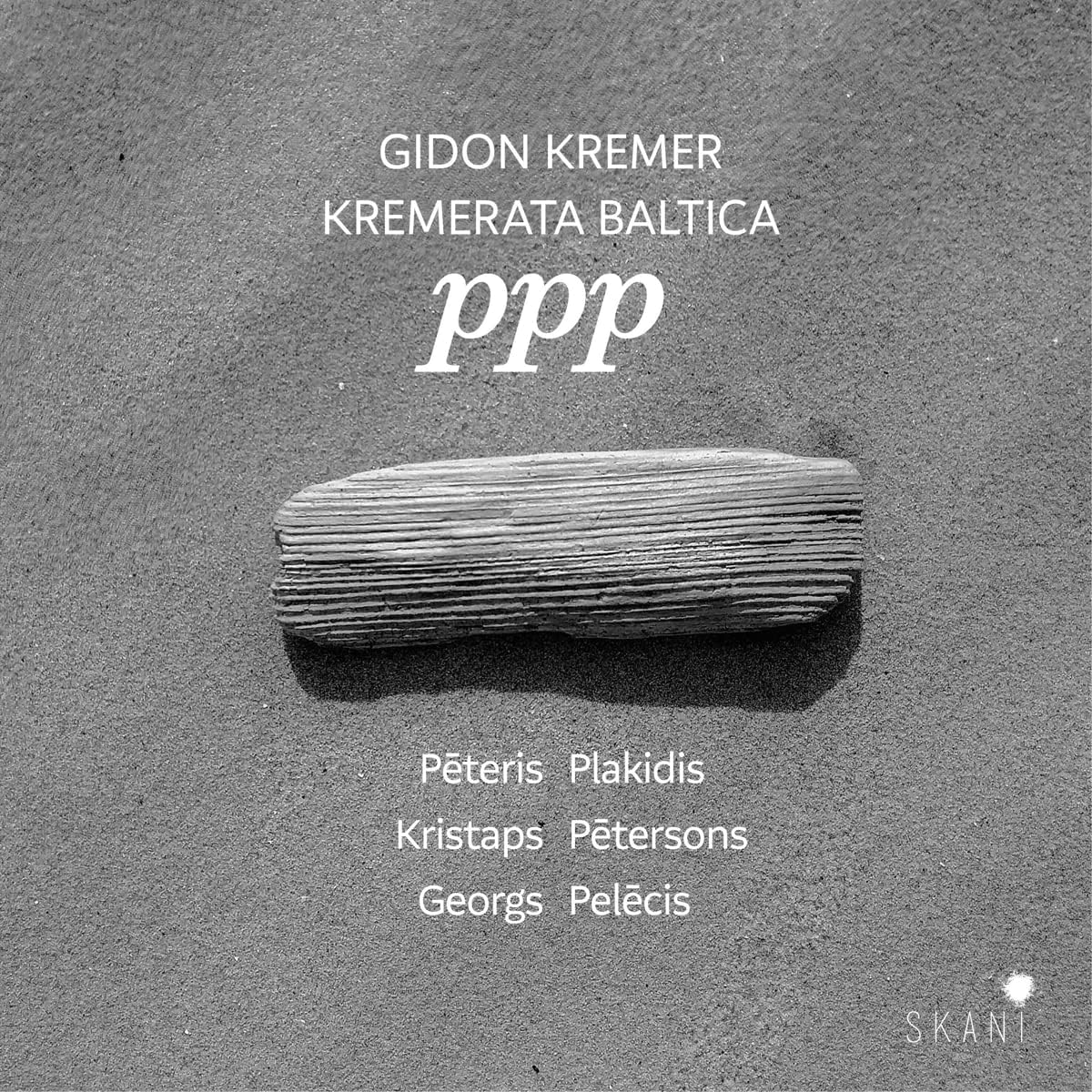 ppp - works by Pēteris Plakidis, Kristaps Pētersons and Georgs Pelēcis Gidon Kremer, with Kremerata Baltica and Kremerata Lettonica (SKANi)
ppp - works by Pēteris Plakidis, Kristaps Pētersons and Georgs Pelēcis Gidon Kremer, with Kremerata Baltica and Kremerata Lettonica (SKANi)
Amid the celebrations of Gidon Kremer's 75th birthday last year, this is a good album which got away. Yes, we did cover his remarkable Wigmore Hall concert, overshadowed by the then imminent Russian invasion of Ukraine, and also a celebratory 21-CD retrospective set from Warner Classics. But such is Kremer's way of giving the slip to his minders and achieving long-term creative freedom, it is perhaps not surprising that there should be more. This review, if late, does happen (happily) to coincide with one of the works on the album already flying free and taking on a different life: movements from Georgs Pelecis' "Fiori Musicali" have just entered the repertory of Ballet Kiel in Northern Germany, with new choreography by Wubkje Kuindersma.
Kremer is mostly on this album as catalyst: his violin playing is to be heard on just four of its eleven tracks. That is because there is another agenda present, that of SKANi, essentially the recording arm of the Latvian Music Information Center, tasked with promoting work by Latvian composers. Both Peteris Plakidis and Georgs Pelēcis were born in 1947, which makes them direct contemporaries from the same year of birth as Kremer himself. Kristaps Pētersons (b.1982) is a bassist in Kremerata Baltica and his compositions are much more experimental, involving electronic sounds, always finding new and unexpected sonorities and contrasts. Of the two older composers, Plakidis inhabits that world where you can't tell if he is giving us a genuine folk melody or Stravinsky. Pelēcis is more of a classicist: he has written several armfuls of academic papers on counterpoint. Here, however, the results are heart-on-sleeve: "Vientuļā kalla" could be an encore for a string orchestra to play, or provide classy relaxation on a Classic FM playlist. The last track, the langorous "Kosmejas skumjas" (Cosmeia's sadness) is dreamlike and gorgeous with Kremer as soloist and the surprising presence of a vibraphone as the contrasting melodic voice. Sebastian Scotney
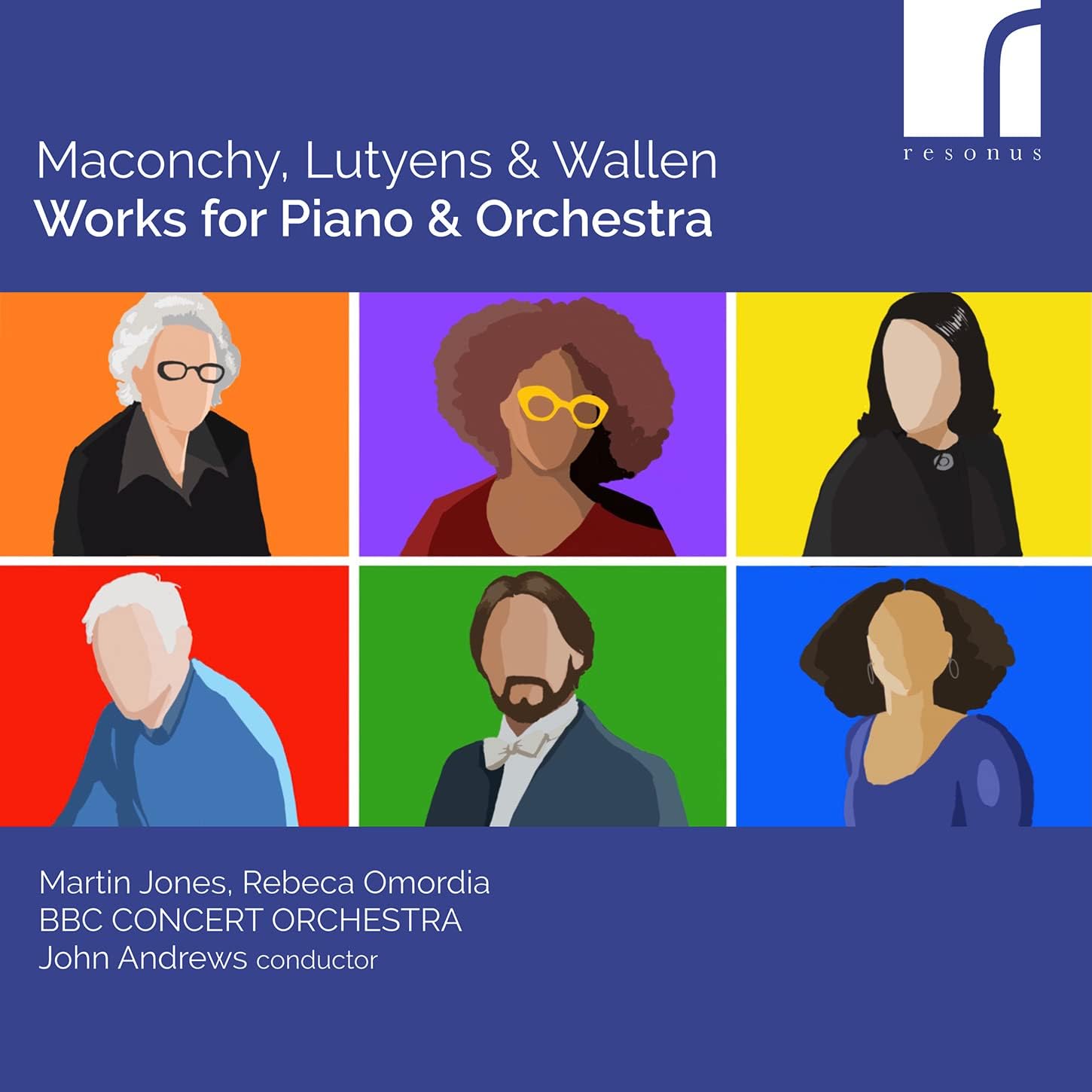 Maconchy, Lutyens & Wallen: Works for Piano and Orchestra (Resonus)
Maconchy, Lutyens & Wallen: Works for Piano and Orchestra (Resonus)
The piano concerto since Beethoven has often been a muscular affair, dramatising a contest between orchestra and soloist. These four pieces show composers – who all happen to be British women – offering different approaches to this structural dynamic, with very entertaining and engaging results. Elizabeth Maconchy (1907-1994) is someone I have been listening to increasingly in recent times, and her Dialogue of 1941 encapsulates in its title the central idea of the music: the performers in conversation rather than competition. Premiered in a wartime Prom in 1942 it has Maconchy’s characteristic rhythmic edge, once we are past the quite impassioned, expressive opening "Lento". The "Allegro" that follows is crisply articulated by Martin Jones, the wind soloists of the BBC Concert Orchestra revelling in the chamber-like textures. The "Sostenuto" third movement is a serious movement, contemplative and furrow-browed, setting up the sizzling toccata finale.
The two pieces by Elizabeth Lutyens (also played by Jones) are are cut from very different cloth – both from the Maconchy and from each other. Eos (1975) is a dreamy soundscape, beautifully paced by conductor John Andrews. The outbursts on brass and piano that emerge have a whimsical and improvisatory character that is typical of Lutyens. She never goes out of her way to be welcoming, but the combativeness is enticing. Music for Piano and Orchestra from 1964 has a more overtly Webernian language, once again the piano sitting within the ensemble, the first among equals. And then there’s something completely different again: pianist Rebeca Omordia plays Errollyn Wallen’s Piano Concerto, premiered in 2022. The first two movements are substantial: a hyperactive ‘Presto’, which has plenty of pianistic challenges and a Bartókian edge, followed by a smoky "Languid blues", with echoes of the Gershwin Piano Concerto. After the meat of the piece there is are two short pay-offs: "Tender" is almost entirely still, "Joyful" entirely not-still, channelling Malcolm Arnold in its anarchic energy. Bernard Hughes
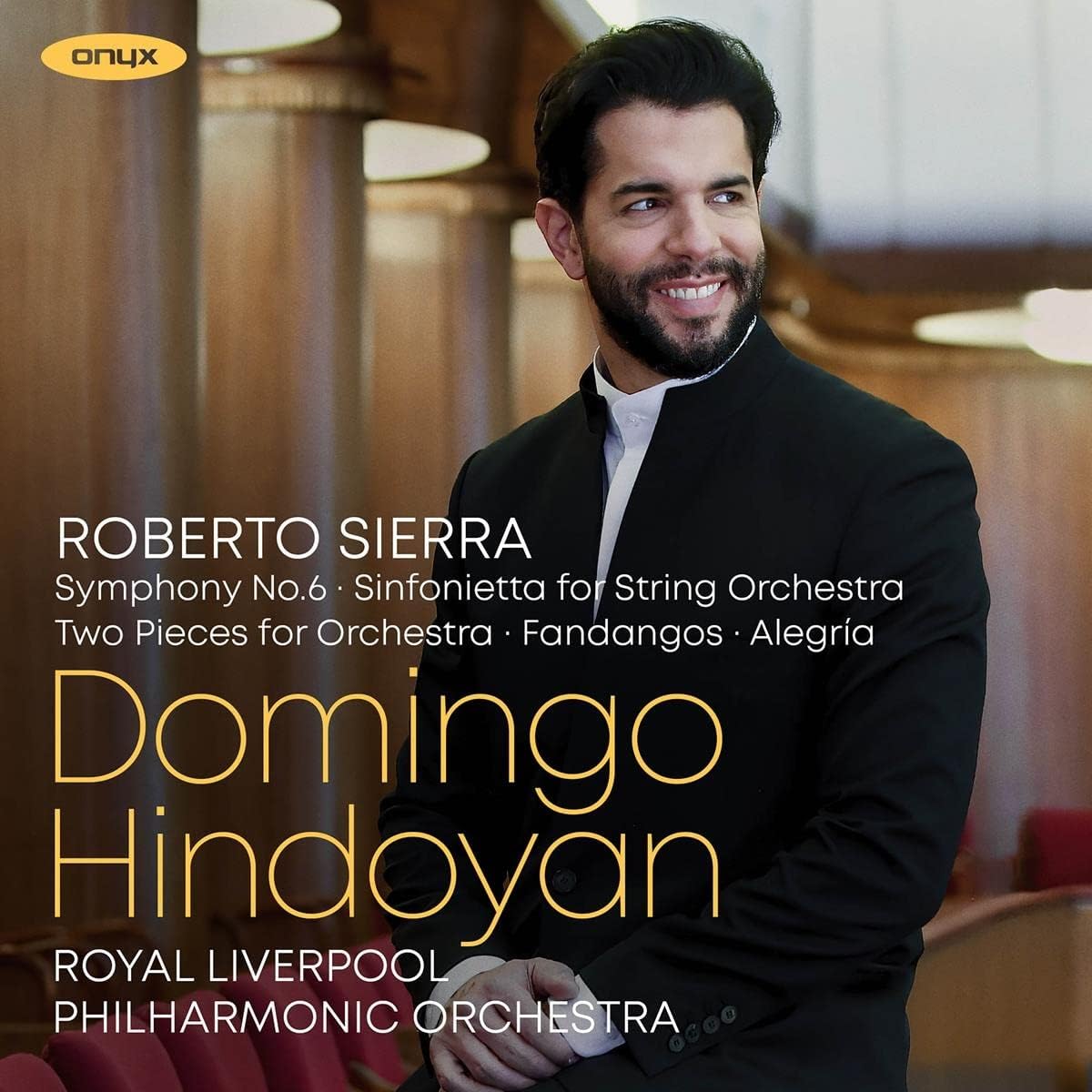 Roberto Sierra: Symphony No. 6, Sinfonietta for Strings etc Royal Liverpool Philharmonic Orchestra/Domingo Hindoyan (Onyx)
Roberto Sierra: Symphony No. 6, Sinfonietta for Strings etc Royal Liverpool Philharmonic Orchestra/Domingo Hindoyan (Onyx)
Puerto Rican composer Roberto Sierra (b.1953) was a name I’d not come across before. A glance at his CV is intriguing; surely Sierra’s instinctive ear for colour and texture owes something to his time spent studying with Ligeti in the 1980s? This collection of orchestral music serves as a superb introduction to an intriguing figure, and you’ll probably find that it satisfies a craving that you didn't know you had. Wait until the neighbours are out, and listen at high volume. Domingo Hindoyan’s collection neatly showcases Sierra’s populist and serious sides, though he’s still thrillingly accessible at his most astringent. So we move from the five-minute Alegria, a propulsive, upbeat showpiece composed in 1996, to the more recent Dos piezas para orquesta, the first of which is a searing lament. Sierra describes the different facets of his musical personality as Apollonian and Dionysian, so the second half’s giddy scrabblings are what you’d expect. Hindoyan secures punchy, passionate playing from the Royal Liverpool Philharmonic, and Onyx’s engineering is spectacular. My favourite work here is Sierra’s 2020 Sinfonietta for String Orchestra, composed at short notice for Hindoyan to conduct at a streamed concert with the Detroit Symphony during the Covid lockdown. In four concise movements, Sierra offers a masterclass in how to write for massed strings. Snap pizzicati and smoochy glissandi catch the ear in the opening “Ritmico”, and the final “Rapido” is brilliantly handled by the Liverpool strings. This is a terrific work – and, again, the performance and engineering is flawless.
Fandangos, composed in 2000, cleverly updates a harpsichord piece by the 18th century Spanish composer Antonio Soler, and the closer is Sierra’s Symphony No. 6, conducted by Hindoyan at his first RLPO concert as Music Director. Sierra’s symphony was conceived as an attempt to create “a sonic representation of nature in a modern sense”. Which here includes music inspired by frenetic urban life, followed by a sultry night piece and a visceral hurricane. A percussive finale closes proceedings with a bang. The most enjoyable contemporary disc I’ve heard in ages. Buy it.
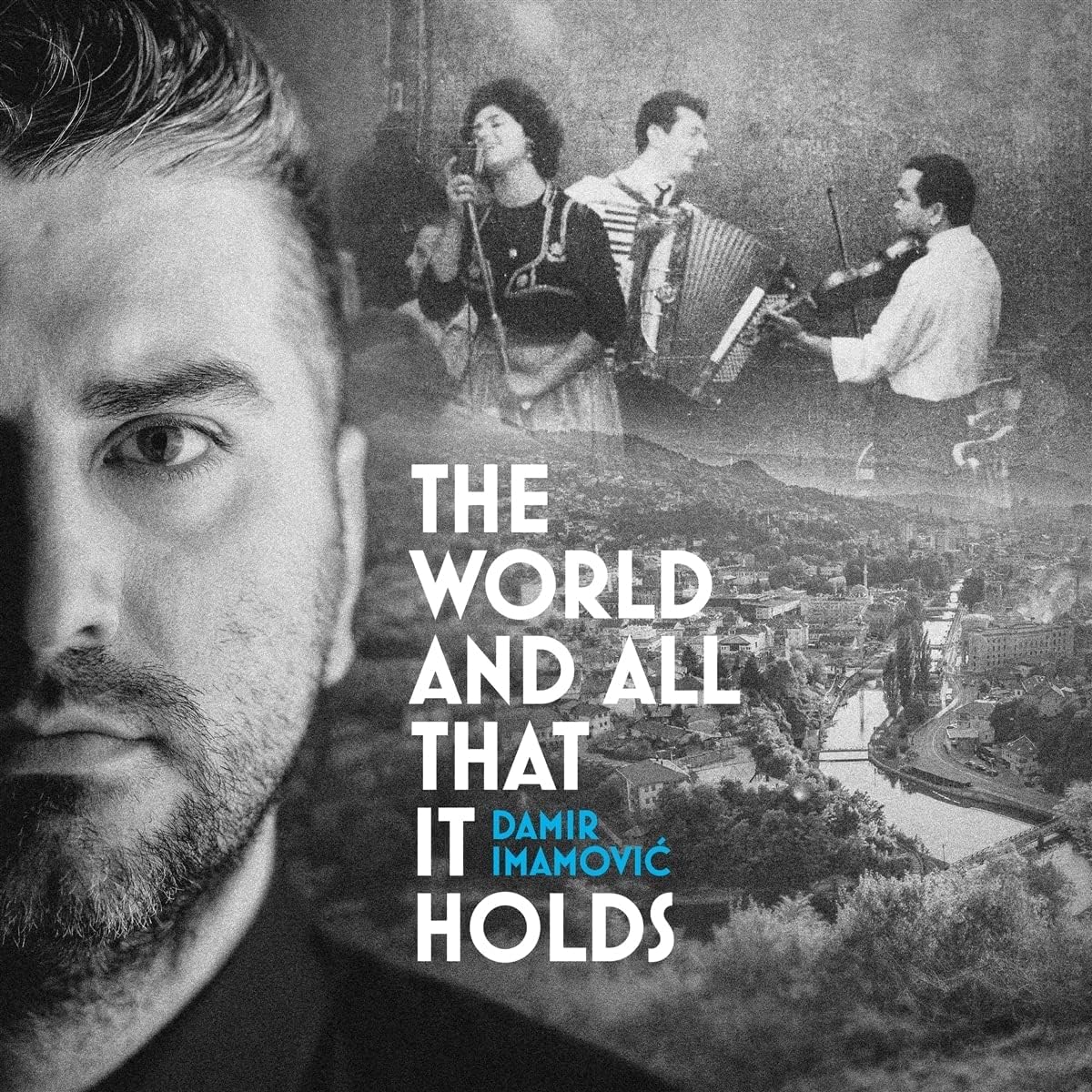 Damir Imamović: The World and All That It Holds (Smithsonian Folkways Recordings)
Damir Imamović: The World and All That It Holds (Smithsonian Folkways Recordings)
Born in 1978, Bosnian musician Damir Imamović comes from a famous family of Sarajevan musicians. He grew up surrounded by sevdah, bittersweet traditional songs which became synonymous with Yugoslavian culture during the Tito era. Imamović studied philosophy instead of music, becoming interested in sevdah during the Siege of Sarajevo (“I endured it all by playing my guitar and reading a lot…”) and subsequently cataloguing and editing the songs performed by his grandfather Zaim, a legendary sevdah singer. Inspired by The World and All That it Holds, a historical novel by Aleksandar Hemon, this album contains a tantalising mixture of traditional and newly composed sevdah songs. Beautifully performed and arranged, they sent me straight to YouTube in search of more. The opener, Imamović’s “Sinoć”, is a dark but catchy meditation on the loss of a friendship, Imamović’s affecting and expressive voice, followed by an offbeat number recounting a Bosnian epic hero’s improbable but erotic dalliance with a fairy.
Veteran producer Joe Boyd’s preference for recording live in a studio gives the performances a thrilling punch and immediacy, Imamović’s vocals supported by a superb backing band. Imamović describes his “Osmane” as “both a love cry and a funeral march,”, and “Madre miya, si mi muero” is sung in Ladino, a Judaeo-Spanish language once commonly spoken in Sarajevo. Especially poignant is the closing number, “Koliko je sirom svijeta”, famously performed by Zaim Imamović, a heart-breaking song about emigration and remembering those left behind. It’s all superb. Do buy the CD instead of downloading, and enjoy perusing the 48-page illustrated booklet which contains texts and translations along with essays by Imamović, Hemon and Boyd.

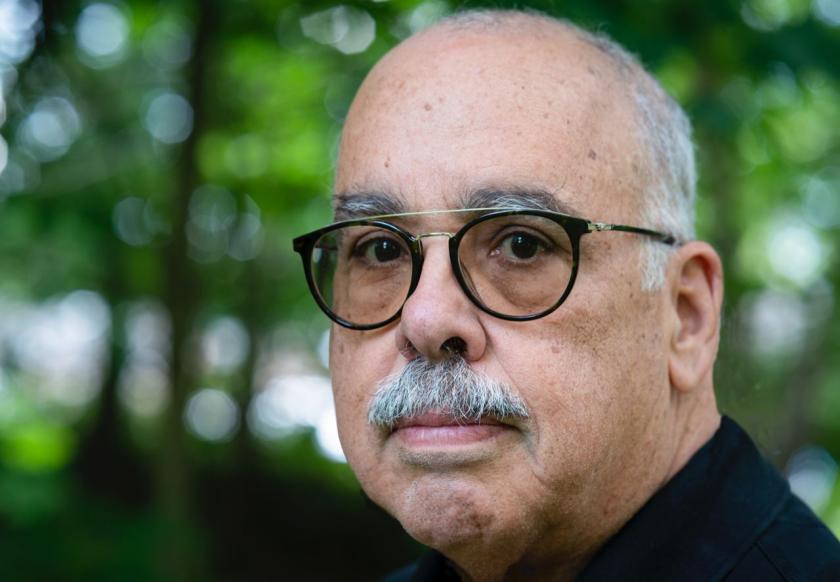













Add comment